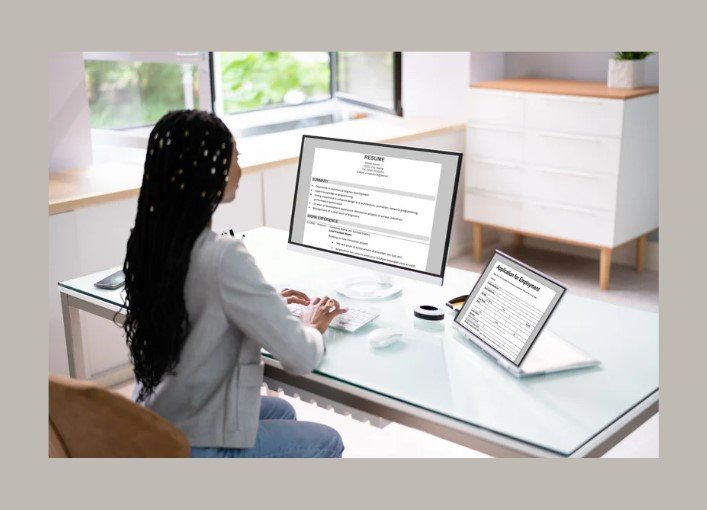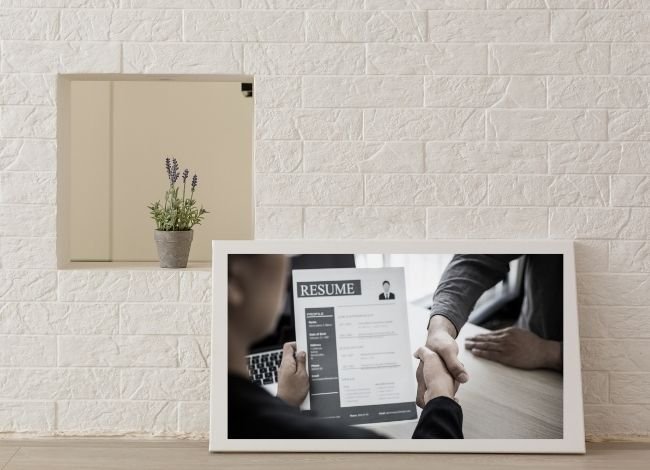Landing your dream job today requires more than just the right qualifications—it requires presentation. A resume is often the very first impression you make on a recruiter or hiring manager. While your skills and achievements are the backbone of your career story, the way they are structured and displayed determines whether your resume will be noticed or ignored. This is where a modern professional resume template for Microsoft Word can make all the difference.
Microsoft Word remains one of the most widely used tools for creating resumes due to its simplicity, compatibility, and flexibility. With Word templates, job seekers can save valuable time, maintain consistent formatting, and ensure that their resumes meet professional standards. The modern designs available now go beyond the plain text layouts of the past—today, you can find Word resume templates that are sleek, industry-specific, and ATS-friendly (Applicant Tracking System friendly).
In this article, we’ll cover 15 different types of custom resume templates for Microsoft Word, each with a unique purpose and appeal. We’ll also walk through tips on how to select the right template, how to use it effectively, and common mistakes to avoid. By the end, you’ll know exactly how to craft a visually appealing, professional, and job-winning resume.
15 Custom Resume Templates for Microsoft Word
1. Simple
Sometimes less is more. A simple resume template is designed for candidates who want to present information in a clean, straightforward, and no-frills format. It typically includes clearly defined sections for education, work history, and skills. Recruiters appreciate simple templates because they are easy to skim, ensuring no detail is lost in over-designed layouts.
Perfect for entry-level positions, administrative roles, or industries where tradition matters.
Easy to customize, ensuring that the content speaks louder than the design.
2. Executive
For senior professionals, executives, and leaders, the executive Word resume template balances elegance with authority. It often features a professional header, subtle use of bold lines or dividers, and a layout that emphasizes achievements over duties.
Great for CEOs, directors, or department heads.
Allows space for career highlights and professional summaries that establish authority quickly.
3. Clean
The clean resume template shares similarities with the simple version but often has a modern edge. Minimal use of borders, icons, or muted colors keeps the design fresh yet professional.
Works well in industries like healthcare, finance, or education.
Ensures recruiters can easily focus on your skills and experience without distraction.
4. Current
A current template reflects modern trends in resume design, often using soft color highlights, two-column structures, or subtle use of graphics. It helps applicants look up-to-date and tech-savvy.
Ideal for marketing, communications, and media professionals.
Emphasizes creativity while staying ATS-friendly.
5. Pretty
While “pretty” may sound casual, this type of template is popular among creative job seekers who want to stand out visually. These Word resume templates may use stylized fonts, decorative dividers, or elegant color schemes.
Perfect for graphic designers, fashion professionals, or event planners.
Caution: Avoid using too many visuals, which can make it harder for ATS systems to read.
6. Classic
The classic resume template is timeless. It relies on traditional one-column structures, black text, and minimal decoration. This is the style recruiters have trusted for decades.
Best suited for law, government, academia, or conservative industries.
Still widely effective because of its professional and universally accepted look.
7. Premium
Premium templates in Microsoft Word often combine sophisticated layouts with high customization options. These are designed to look polished and professional while showcasing modern appeal.
Useful for mid-career and senior professionals applying to competitive positions.
Many premium templates are sold online and come with matching cover letter designs.
8. Two Column
The two-column resume template is one of the most popular modern designs for Microsoft Word. It divides the page into two sections: one column for concise details like contact information, skills, and certifications, and a larger column for experience and education.
This design helps recruiters quickly scan key highlights without losing track of detailed achievements.
Works well for applicants in sales, marketing, consulting, and creative industries.
Keeps the layout balanced, ensuring information is not crowded.
9. Tech
A tech resume template is crafted for candidates in technology-driven industries, such as IT, software development, and data analysis. These templates often include space for technical skills, programming languages, and certifications. Some even feature small icons or subtle graphics to enhance readability.
Highlights core competencies like coding languages, tools, or project experience.
Maintains a clean, modern structure to appeal to both hiring managers and ATS software.
10. Aesthetic
An aesthetic resume template balances visual appeal with professionalism. These templates may use stylish fonts, color accents, or geometric dividers. The goal is to present your information in a visually pleasing way without being over-designed.
Suitable for marketing professionals, designers, and those in creative fields.
An aesthetic design can help you stand out in industries where personal branding matters.
11. Corporate
The corporate resume template emphasizes professionalism and clarity. It avoids flashy elements and sticks to structured layouts, typically with bold headings, clear fonts, and well-organized sections.
Best for corporate jobs in finance, HR, management, or operations.
Projects a strong, reliable, and no-nonsense impression to hiring managers.
12. White House
The White House template is designed to appear formal, prestigious, and commanding respect. It usually has a well-defined header, a structured body, and room for achievements and recognitions.
Perfect for jobs in government, administration, law, or academia.
Provides an authoritative and dignified style that sets the tone for serious professional applications.
13. Visual
Visual templates use graphic elements like icons, bars, or subtle charts to highlight skills and achievements. They give recruiters a quick snapshot of your expertise.
Often used in creative industries like design, advertising, or digital media.
Can help illustrate soft skills or technical abilities in an engaging format.
Important to balance visuals with ATS readability, so avoid overloading graphics.
14. Pastel
Pastel templates incorporate soft colors like light blue, peach, or mint green, giving the resume a modern yet approachable vibe. These colors make the resume stand out without being too loud.
Ideal for job seekers in wellness, hospitality, education, or creative roles.
Creates a warm and welcoming impression while still looking professional.
15. Cosmopolitan
The cosmopolitan template blends global sophistication with modern design. It often features two or three columns, tasteful color accents, and bold typography.
Great for candidates in international business, fashion, communications, and media.
Represents a confident, stylish, and worldly professional personality.
With these 15 modern professional Word resume templates, candidates can select a design that aligns with their career goals, industry standards, and personal brand. Each template carries a unique flavor, ensuring that your resume doesn’t just communicate information but also reflects your professional identity.
How to Select a Microsoft Word Resume Template
With hundreds of templates available, choosing the right Microsoft Word resume template can feel overwhelming. The best approach is to think strategically about how you want to present yourself to recruiters. Your template is more than just a design—it’s a reflection of your professionalism, communication style, and suitability for the role. Below are the main factors to consider when selecting the perfect template:
Match the Template to Your Career Stage
Entry-Level or Fresh Graduate: A simple or clean layout works best. Recruiters expect clear formatting that highlights education, internships, and transferable skills.
Mid-Level Professional: Opt for modern or corporate templates that showcase work experience, achievements, and a growing list of responsibilities.
Senior Executives or Leaders: Executive or premium templates offer space for detailed career highlights, board memberships, and leadership achievements.
Consider Industry Standards
Not all industries expect the same type of resume. A graphic designer applying with a plain black-and-white template may look outdated, while a lawyer using a pastel-colored resume may look unprofessional. Understanding what your target industry values is crucial.
Creative Fields: Aesthetic, visual, or pastel templates allow you to display creativity.
Traditional Professions: Classic or White House templates give a professional and trustworthy appearance.
Corporate Jobs: Executive, clean, or corporate templates signal seriousness and reliability.
Tech Jobs: Tech templates emphasize technical skills and project experience, aligning with employer expectations.
Prioritize Readability and ATS Compatibility
Applicant Tracking Systems (ATS) are used by most companies to filter resumes. A beautiful resume is useless if the ATS can’t read it.
Stick to standard fonts like Arial, Calibri, or Times New Roman.
Avoid heavy graphics that might confuse parsing software.
Make sure headings like “Work Experience,” “Education,” and “Skills” are clearly labeled.
Think About Your Personal Branding
A resume isn’t just a document—it’s part of your personal brand. The template you choose should align with how you want to be perceived:
Do you want to look innovative and bold? Choose a modern or cosmopolitan template.
Do you prefer to appear reliable and traditional? Go with a classic or simple design.
Are you applying internationally? A cosmopolitan or executive template may better reflect global professionalism.
Practicality and Customization
Finally, ensure the template is easy to edit and customize in Microsoft Word. Some overly complex templates may look attractive but can be difficult to modify. The goal is to maintain consistency while being able to tailor the resume for each job application.
How to Get the Most Out of Word Resume Templates
Downloading a modern professional resume template for Word is only the first step. To truly stand out, you need to optimize the template for your specific career path. Think of the template as a framework—it gives you structure and design, but it’s your responsibility to fill it with compelling, relevant content. Here’s how to maximize its potential:

Customize for Each Job Application
A common mistake many applicants make is sending the exact same resume to every employer. Instead, tailor the content in your Word template to highlight the skills and experiences that match the job description.
Update keywords to align with the posting.
Rearrange achievements to put the most relevant ones first.
Add or remove sections (such as certifications, volunteer work, or projects) depending on the role.
Focus on Achievements, Not Just Duties
Templates often provide space for bullet points under each job. Instead of listing daily responsibilities, emphasize accomplishments. For example:
Instead of writing “Managed social media accounts,” write “Increased brand engagement by 35% through targeted social media campaigns.”
This not only makes your resume stronger but also ensures the recruiter sees the real value you bring.
Keep Formatting Consistent
Even the best-designed template can look sloppy if you don’t maintain formatting consistency.
Stick to one font style and size across the document.
Align headings, margins, and bullet points properly.
Ensure spacing is even between sections.
This attention to detail shows professionalism and prevents your resume from looking rushed.
Use Color and Design Wisely
Modern Word templates often include colors, lines, or subtle icons. While these features can make your resume attractive, don’t overdo it.
Use color highlights sparingly, such as for headings or section dividers.
Ensure the text remains easy to read in both print and digital formats.
Avoid loud or distracting colors that could reduce readability.
Save Multiple Versions
One of the greatest advantages of using Microsoft Word templates is the ability to save different versions. Keep a master copy of your resume and create customized versions for different industries, roles, or employers. This way, you’ll always be prepared without having to redesign from scratch.
Proofread and Test Before Sending
A polished template won’t save you if there are spelling mistakes or formatting errors.
Proofread carefully for typos and grammar mistakes.
Save the file as both a Word document and a PDF to test how it looks.
Open the PDF on different devices to ensure the formatting is consistent.
By using these strategies, you’ll not only make the most of your Word resume template but also give yourself a competitive edge in the hiring process.

